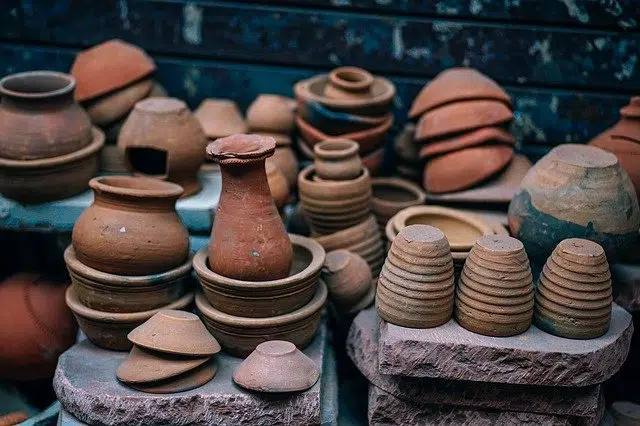
The idea of ceramics is associated with the production of earthenware, porcelain or clay items.
Ceramics is the art of making porcelain , earthenware and clay objects. The concept comes from the Greek keramikos , "burned substance" and refers not only to art, but also to the set of objects produced, to scientific knowledge about said objects and to everything belonging to or related to ceramics.
Historians believe that ceramics emerged in the Neolithic period due to the need to create containers that could store surplus crops. This ceramic was molded by hand and dried in the sun or around the fire.
The importance of firing in ceramics
From the application of firing and the development of geometric models and drawings for the decoration of objects, pottery emerged (the art of making baked clay vessels ).
The Chinese would have been the first to apply advanced techniques for firing objects. Their knowledge spread first throughout the Eastern world and then reached the West .
Porcelain, terracotta, earthenware and other products
There are different techniques and products linked to ceramics. Porcelain , a hard, translucent material that is usually white, was developed in China between the 7th and 8th centuries .
Terracotta ( "baked earth" ) is older, dating back to the 3rd century BC. It is modeled and baked clay , generally used for the creation of containers, sculptures and decorations.
Earthenware (varnished or glazed terracotta), stoneware (ground with water and pressed to make it more resistant) and majolica (which has a particular vitreous finish) are other materials linked to ceramics.

The art of making porcelain products is known as pottery.
Characteristics of materials linked to ceramics
One of the characteristics that all the materials of this art share is their ability to insulate temperature and, on the other hand, their fragility .
These characteristics make it impossible to cast these materials and also to mechanize their formation with tools such as milling cutters, lathes and broaches. For this reason, the way to work with these materials is through sintering . It is a process that consists of obtaining ceramic products (it is also used to manipulate certain metals ) from elemental crushing.
It is made up of various phases : preparation of the raw material , mixing of the components that are needed to obtain the product, shaping of the piece with the minimum resistance to be able to handle it carefully and sintering to obtain the final product and treatment. thermal to seal the piece.
The entire process is known as sintering and could be defined as an isothermal treatment of the green part to convert it into one with the strength needed to be used for industrial purposes . To achieve this objective, it is necessary to have an oven that can reach the necessary temperature for this treatment to be effective, which varies according to the material being worked with.
From this process , more or less resistant materials can be obtained , taking into account the way in which the material has been worked and the tension between the various components has been managed.
Classification according to type
In the case of porous materials , for example, vitrification has not occurred, so they are permeable objects that are easy to fracture. Among these we can mention fired clays (they are reddish in color and are fired at a temperature of 700 to 1,000 °C. They are used to make bricks, tiles and pots, among other elements), Italian earthenware (obtained from a clay yellowish and cooking is carried out at a temperature between 1,050 to 1,070 °C.).
Refractory materials are more resistant than the previous ones because they are produced from a series of more exhaustive steps and, once achieved, they are highly resistant, withstanding temperatures of up to 3,000 °C.
Among the waterproof and semi-impermeable materials we can find common or fine ceramic stoneware and they are characterized by being more refined materials, exposed to a waterproofing process that turns them into extremely resistant products that prevent the passage of water. They are used for construction and for elements that must undergo significant exposure.
